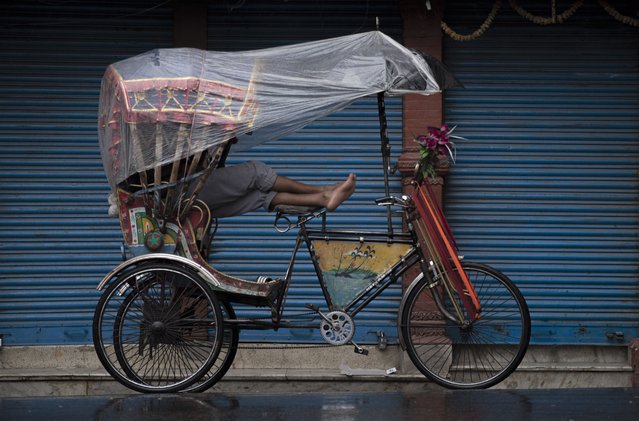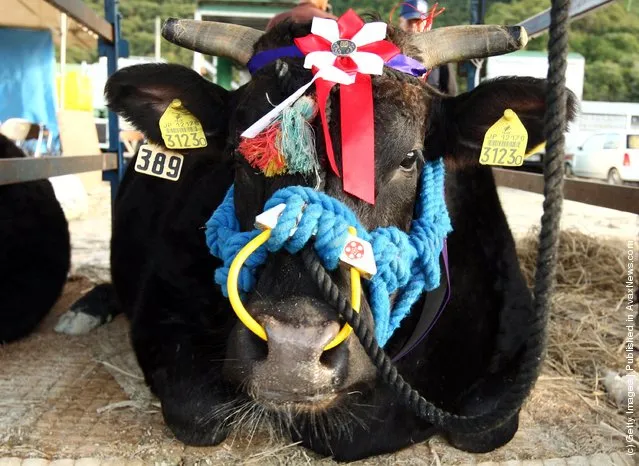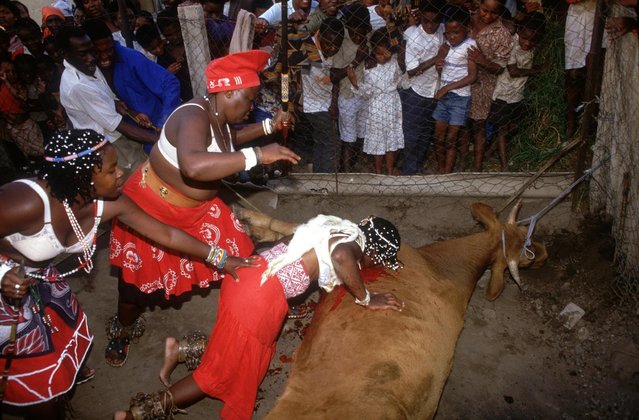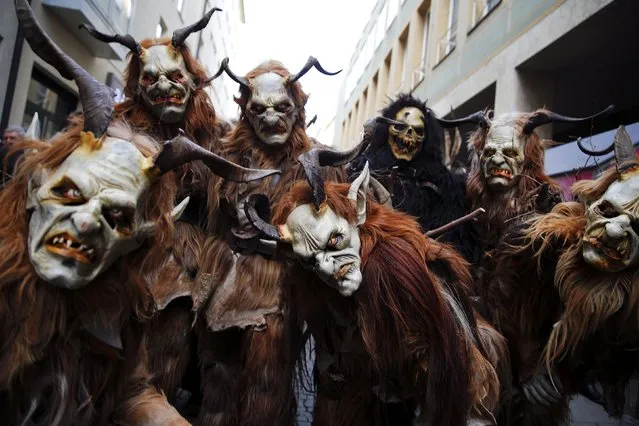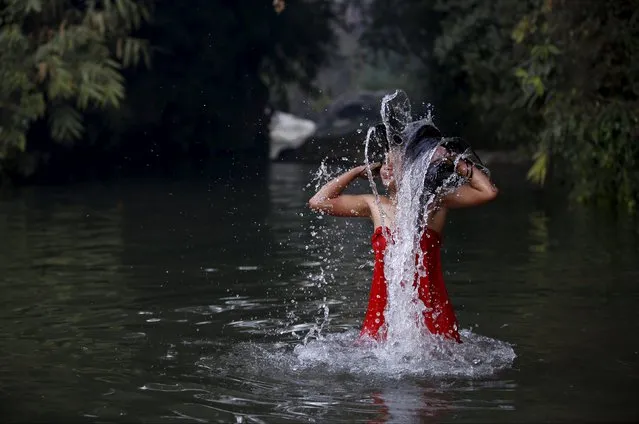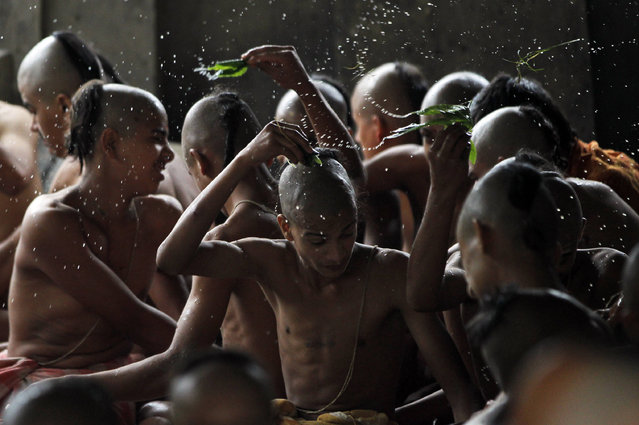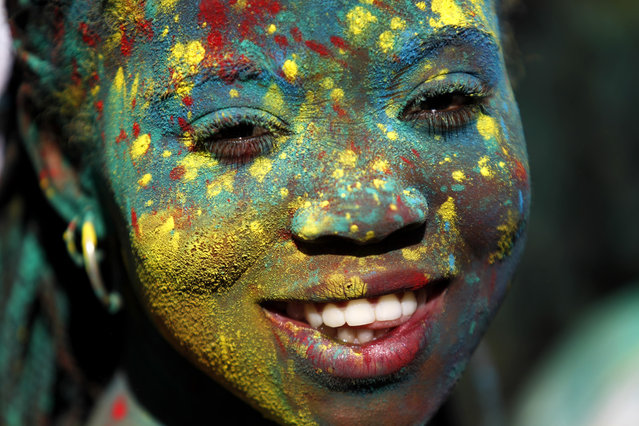
A woman, with her face covered with colored powders, dances during the Holi Festival of Colors in Lisbon, Sunday, September 15 2013. The festival, which is mainly celebrated during the Hindu spring festival Holi in some regions of India and Nepal, has become popular among people in other communities. (Photo by Francisco Seco/AP Photo)
21 Sep 2013 08:02:00,post received
0 comments

